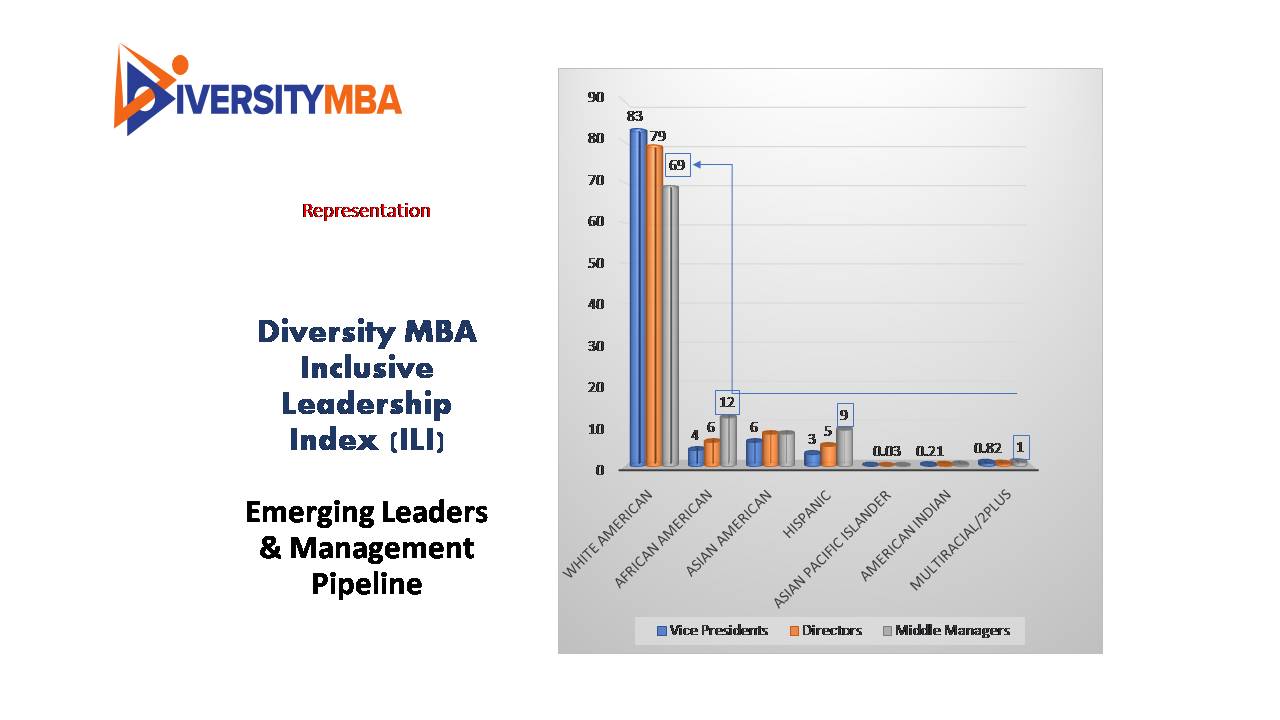Filling the Color Gap
Leaky Pipeline Series Part 2
Management pipeline chart
It’s amazing how fast time past. Just a few decades ago, after the women’s movement the focus shifted to providing access to colored professionals in skilled jobs, with a specific focus on African Americans, simply because they were the largest minority group at that time. Before Affirmative Action, there was the Plan of Progress; an initiative to provide access to professional level and skilled people of color. Certain industries championed this cause particularly those influenced by government contracts. Companies like, Walgreens, Lockheed, GE, Boeing et al. Although across the country this initiative was met with resistance, not much could stop the changing population explosion of people of color and the exponential numbers entering the workforce.
I acknowledge there are many versions of the influence of affirmative action. The reality is, it was designed with the intent to drive parity and access to management and leadership roles for people of color and disadvantaged groups in the workforce. I appreciate the requirements of federal government contracts accountability for hiring and reporting. This at least forced some accountability among large companies. The good news is that, once CEOs get the diversity business imperative the drive for parity among women and people of color is accelerated.
You would think, with this effort, more progress would have occurred; its just been slow. And yes, we need to celebrate the milestones that have been made since the Civil Rights Movement. We do have people of color in leadership and management roles, but the pipeline is leaky. There is so much that can be shared but for this section of the series, we will review the progress of people of color. I thought the utube video fairness experiment says it all when you cannot really express how it feels to be consistently overlooked. (https://www.youtube.com/watch?v=-KSryJXDpZo ).
Let me just clarify what I mean by the pipeline is leaky for people of color in leadership and management roles. Based on the DMBA ILI the average employee retention ratio for White Americans is 89 percent across industries as compared to 86 percent for Asian Americans; 85 percent for African Americans; 84 percent for Hispanics; and 75 percent for American Indians. Although these are employee ratios; reduce each group by between 5 -7 percent for management retention ratios across industries for people of color.
DMBA Inclusive Leadership Index insights will provide you with a perspective of where people of color are in the pipeline and the urgency to level the field. It illustrates the color gap. The question to ask is what are the programs and/or initiatives companies have in place to expedite these groups to the next level?
The data below is from the 2018 DMBA Index. The percentages are based on the participation of 589 companies ranging from average size of employees 5,000 for regionals and 35,000 for multinationals.
- The pipeline for leadership is ready talent in vice president, director and middle management levels. If White Americans are the dominant group in the pipeline; your organization has a color gap, not just a gender gap.
- 83 percent of vice presidents level positions are White Americans with 17 percent people of color;
- 79 percent of director level positions are White Americans with 23 percent people of color;
- 69 percent of middle manager positions are White Americans with 31 percent of positions with people of color. This is the good news.
- 12 percent of African Americans are the largest group ready for advancement at the middle management level; 6 percent director level, and 4 percent at the vice president level. Progress is slow.
- 8 percent of Asian Americans are ready for advancement at the middle management level; 8 percent director level, and 6 percent at the vice president level.
- 9 percent of Hispanics are ready for advancement at the middle management level; 5 percent director level, and 3 percent at the vice president level.









